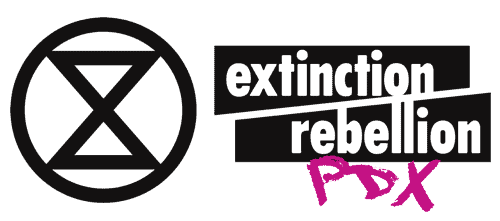These two important documentaries, although different, are very connected in their opposition to industries that do not care about the health of the people or planet we live on.
Once a Braided River by Barbara Bernstein is essentially a documentary about the dark side of capitalism that takes place along the north reach of the Willamette River in North Portland where the residents were marginalized and the environment decimated. The documentary traces the history of development and devastation along the reach and the struggle of communities and environmental groups, against the power of industry and government, to make the area a “green working waterfront with good jobs, clean energy and a healthy ecosystem”.
Prior to industrialization the north reach of the Willamette River was a braided river with shallow channels and islands and with high biological diversity. Many bands of indigenous tribes lived, traveled, hunted and fished in the area and respected the land. They include the Multnomah, Clackamas, Nez Perce and Yakima. Over time European settlers transformed this reach. Channels were filled or dredged, wetlands filled in and banks hardened to create a very controlled river. Industries came in and regarded the river and its floodplain as a dumping ground for wastes creating an extensive superfund site about 10 miles in length. Today the area is considered an industrial sanctuary and sacrifice zone by the city. Linnton, located along Highway 30, was once a vibrant and diverse community until it was annexed by the city and industrialized. Oil trains and pipelines run through the town creating a very hazardous condition for the residents that still live there. To add insult to injury, they have no beach access and the land owners refuse to allow it.
A major part of the reach is the Critical Energy Infrastructure Hub. The tanks in the Hub store 90% of the fossil fuel used in Oregon totaling about 300 million gallons. The highly explosive and toxic fuels are stored in old tanks, many of which are not built to earthquake specifications. The soils below the tank farms will liquify during a subduction zone or local earthquake. That plus strong ground shaking will compromise the tanks and associated pipelines spilling their contents onto the ground and into the Willamette River creating an ecological nightmare.
Clean up is complicated due to the large number of stakeholders and the reach has become highly politicized. It has taken 20 years to develop a clean up plan due to industry stonewalling. Now that there is a plan there is hope that clean up will happen in the next few years. The commitment and tenacity of the community to create an alternative plan for the north reach, against seemingly long odds, is inspiring.
Another and even darker side to capitalism is the efforts by the nuclear industry to arise from the dead with their supposedly cleaner and less costly nuclear power plants called Small Modular Nuclear Nuclear Reactors (SMNRs). These lies are debunked in the Atomic Bamboozle, a Jan Haaken documentary about the history of the nuclear power industry in Oregon and Washington. The Hanford site in Washington, originally built to produce plutonium for bombs, is still contaminated and leaking radioactive material into the groundwater and Columbia River. How much? The industry is not saying. In 1980 the state of Oregon approved a ballot measure that prohibited new construction and operation of nuclear power generating plants statewide until an adequate location for storage of the wastes has been designated. But the industry is persistent and in the 2017, 2019 and 2021 legislative sessions they have tried to get the legislature to repeal the entire ballot measure or exempt SMNRs but without success and in 2023 three bills have been introduced to do the same thing. Our only nuclear power plant (Trojan) was shut down permanently in 1993 due to public pressure and cracks in the steam generator tubes. We need to continually say no to nuclear power.
In conclusion, capitalism is an economic and political system that is an existential threat to the survival of humans and the earth’s ecosystems. Profit is capitalism’s only reason for existence and damn the public or nature that complains or gets in its way. Most importantly, other economic and political systems exist, or are yet to be developed, that would be much better for the long term health of people and the planet. We do not have to accept capitalism as the only game in town. I highly recommend watching both documentaries and actively oppose capitalism no matter where it rears its ugly head and say yes to a more sustainable and equitable world.

